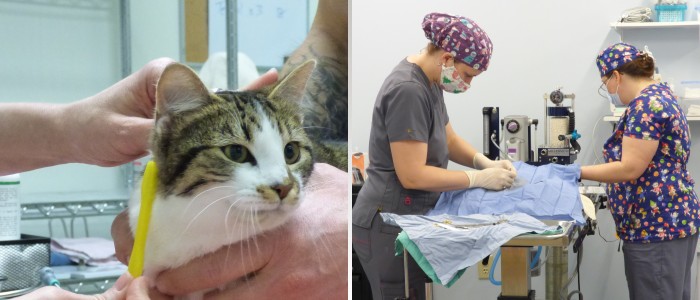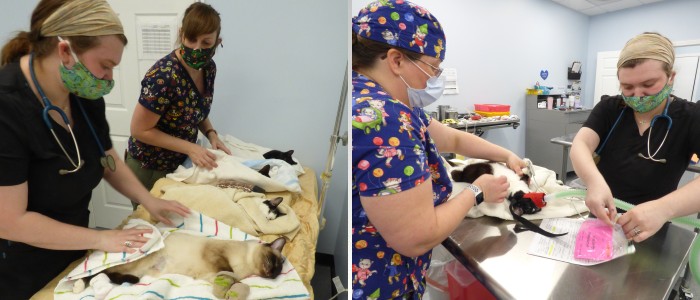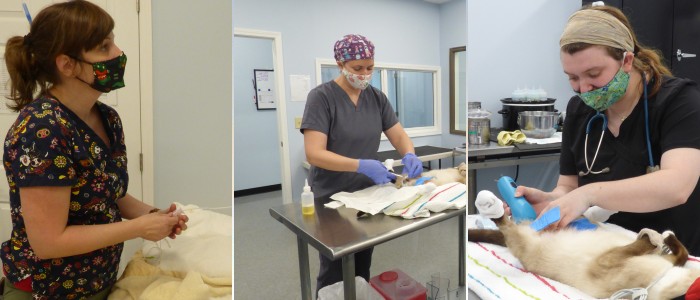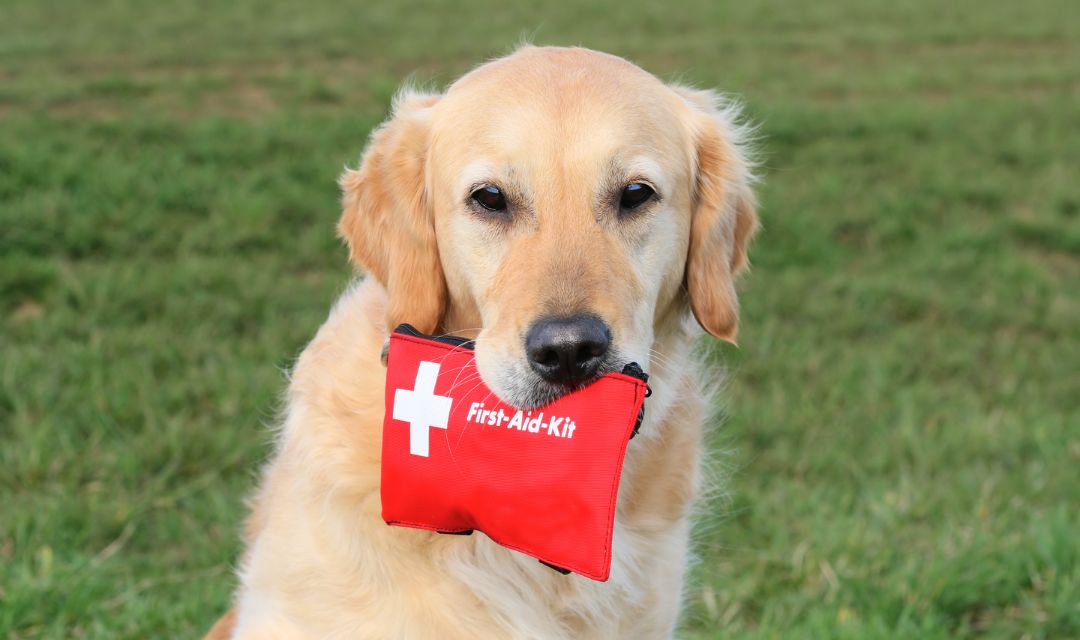Whether it’s natural or man-made, disasters don’t just affect humans – they can affect your pets as well. But making a plan for everyone in your family – human and animal – can help ensure everyone’s safety.
Here are four ways you can prepare:
Make an Evac-Pack.
Just like they recommend for humans, having a go bag in case of an emergency can save time if you have to leave your home in the case of severe weather or other disaster. It’s easy to build an Evac-Pack for your pet. Make sure you include 3-7 days’ worth of canned or dry food, a feeding dish and water bowl, a spare collar and leash, and copies of medical and identification records. Also helpful to include: recent photos of your pet just in case you get separated. While it’s tempting to have only the images on your phone, physical copies can be useful if your phone’s battery dies and you need to create a lost & found poster. Click here for a checklist you can use to make your own Evac-Pack.
Make sure your pet is microchipped.
In a chaotic situation, it can be easy to get separated from your furry family member. While a collar may have your name and identification on it, sometimes a collar can come off. Microchipping can help reunite you quicker with your pet if you’re separated. Make sure your information is updated in the microchip database too any time your contact information changes – that way you will definitely receive the call if someone finds your pet and their microchip is scanned.
Get a rescue alert sticker.
In the case of an emergency evacuation, whether due to a fire or a weather event, you can help rescue workers know that they need to be on the lookout for your pet by placing a rescue alert sticker in a very visible spot, like your front door. The information on this sticker – the types of pets, number of pets, and veterinarian’s information – can help in a time of confusion. Click here to get a free safety pack, including stickers, from the ASPCA. You can also get a card to carry in your wallet with the information on your pets so that in the case of a medical emergency, rescue workers will know that you have pets at home.
Know where your pets will go.
If you have to go to a shelter during evacuation, your pet may not be welcome. Not every emergency shelter is pet friendly, though they will allow trained service animals. But how do you know where to go?
-
-
- Contact your veterinarian for a list of preferred boarding kennels and facilities that may be able to be used in an emergency.
- Ask your local animal shelter if they provide emergency shelter or foster care for pets.
- Identify hotels or motels inside and outside of your immediate area that accept pets.
- Ask friends and relatives outside your immediate area if they would be willing to take in your pet.
-
Also, determine who can be your pet’s “emergency contact” if you have a situation that means you can’t care for your cat or dog. Talk to your pet’s guardian in advance to make sure they agree and keep their information handy so that if needed, they can be called upon to provide for your pet.
While you can’t prepare for every emergency, making plans for what you can help reduce the chance of unfortunate outcomes. For more information that can help you plan ahead, see slides from our Emergency Preparedness class.










